Stage Tab

The Stage Tab is primarily responsible for scene-level attributes like lighting, skybox coloring, and cameras. While this article won't cover each of these in great detail, let's take a brief look at the main tools.
Joints
Joints are essentially empty models that serve as containers for anything in your scene, allowing them to be moved, hidden, or manipulated as a group. For example, here's a joint being used to link logic blocks to related models, allowing them to be moved as a unit.
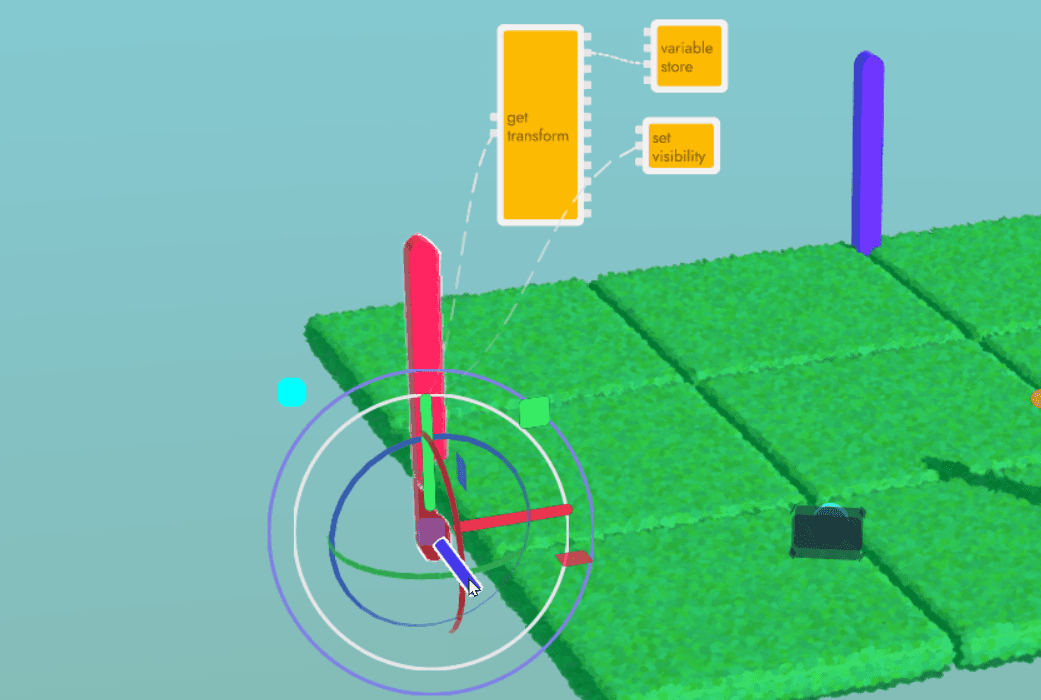
Using them in this fashion has the added benefit of making them act like folders that you can rename and collapse. To group objects in a joint, simply select them (Shift + click on the models or in the organizer) and then click + joint.
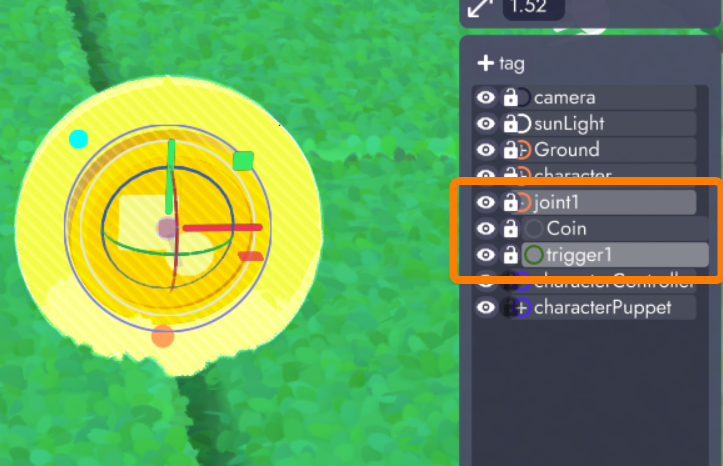
Once inside a joint, you can then do things like flip and squash its contents. You can also change the pivot point of the joint without having to move the models inside.
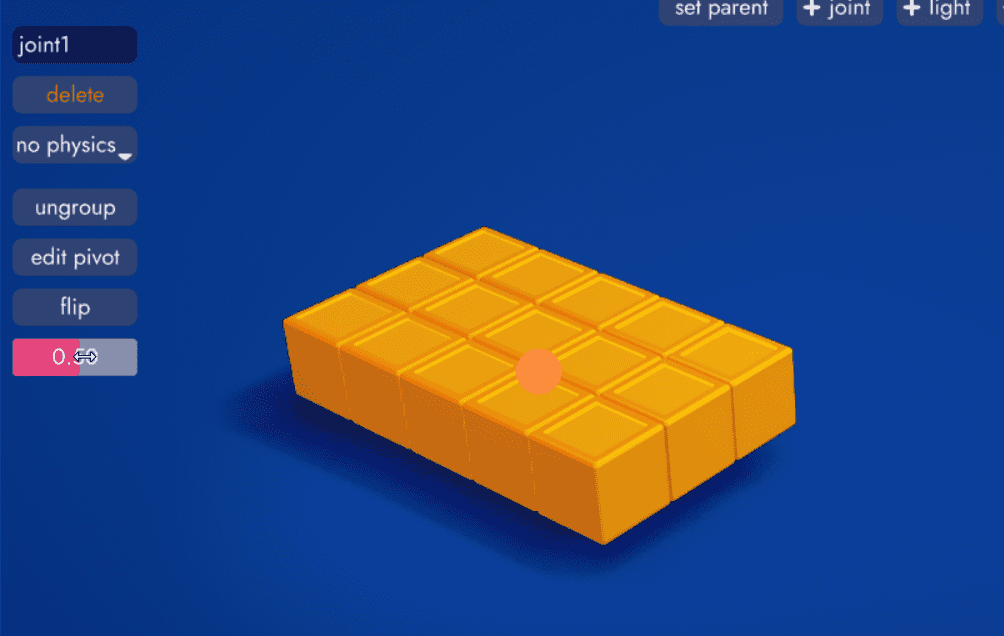
Joints can even act as invisible transforms to feed data into logic blocks... but that's out of the scope of this article.
Lights
Lights behave as you might expect. To add one, click the + light button. Once selected you'll be able to position and rotate it with a 3D gizmo, just like any other object. And also like other objects, each light has editable properties like intensity, color, shadow casting, type, and more.
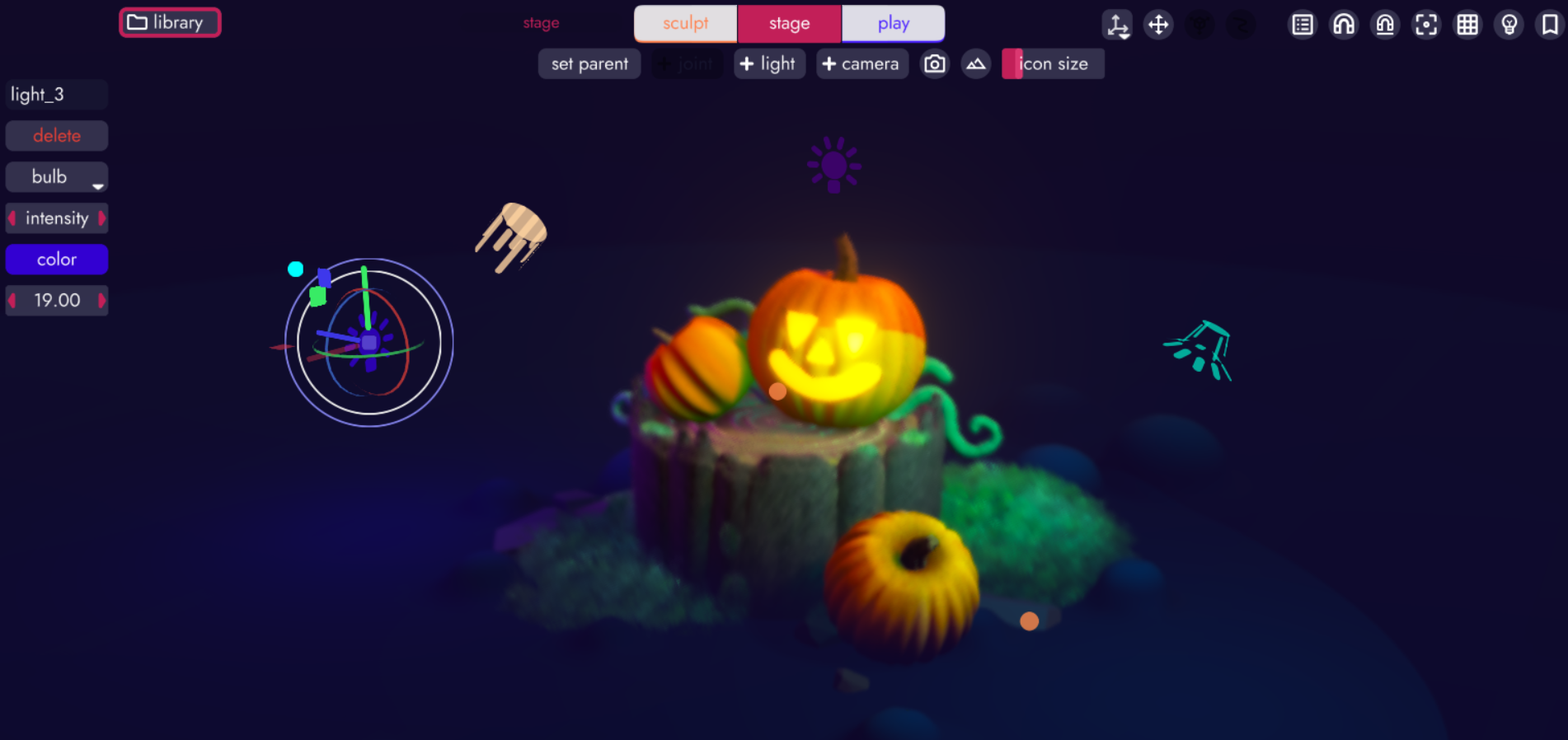
You can see each of the 3 types lights in the above image.
- sun: directional light that affects the whole scene uniformly
- bulb: emanates out in all directions but falls off based on its radius
- lamp: behaves like a bulb but points in a specified direction
Each light has a few properties specific to its type. We won't cover every property here, but they'll become self-evident once you start playing with them :)
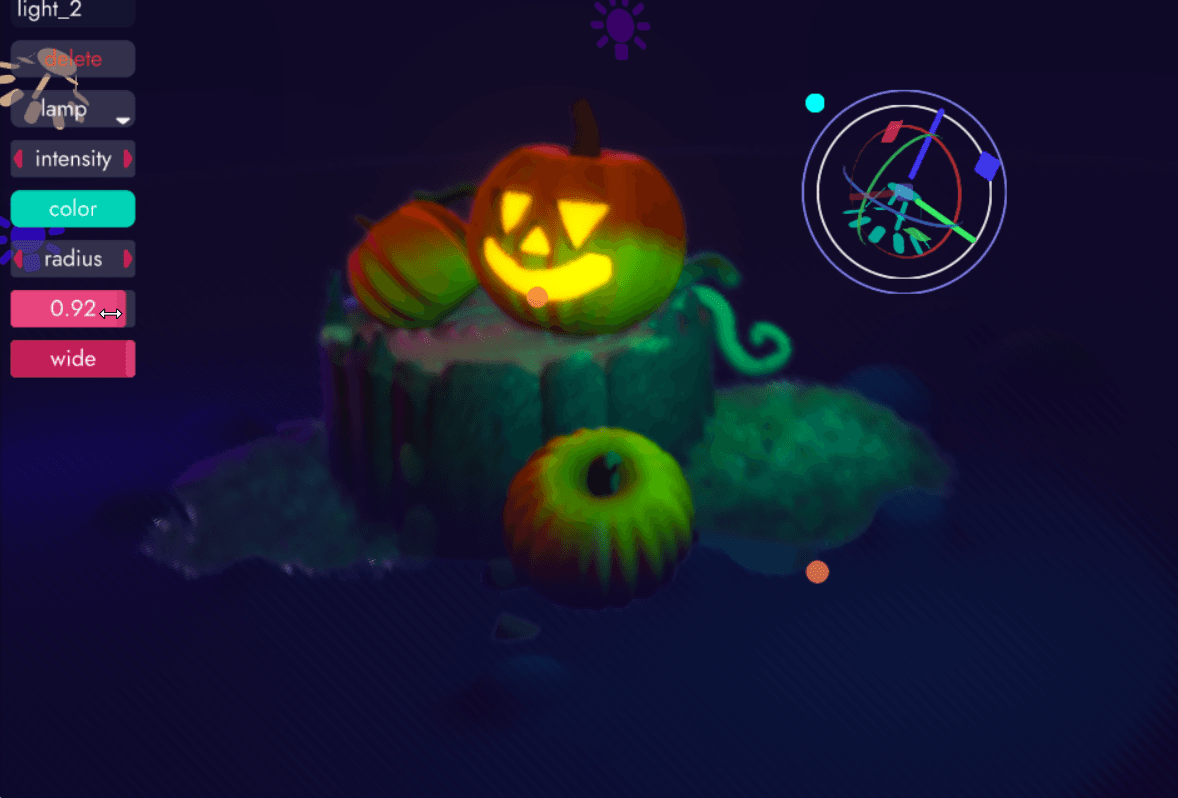
Cameras
Whether you're sculpting models or making games, cameras are essential to any 3D environment. They dictate not only from where and how much of your scene the user sees but also, through post-processing effects, what that view looks like.
Each camera has a wide range of settings like exposure, focal length, saturation, vignettes, and so on - allowing you to tune in not only the look of your project but also the mood and feel.
Cameras can be controlled with code, via the unbound Lua API, animated with the anim block, and by including multiple cameras in your scene you can quickly switch between them either in-game (for specific functionality) or in editor (using bookmarks) as a way to speed up your workflow.
Here's an example showing how changing the focal length affects a camera's depth of field.
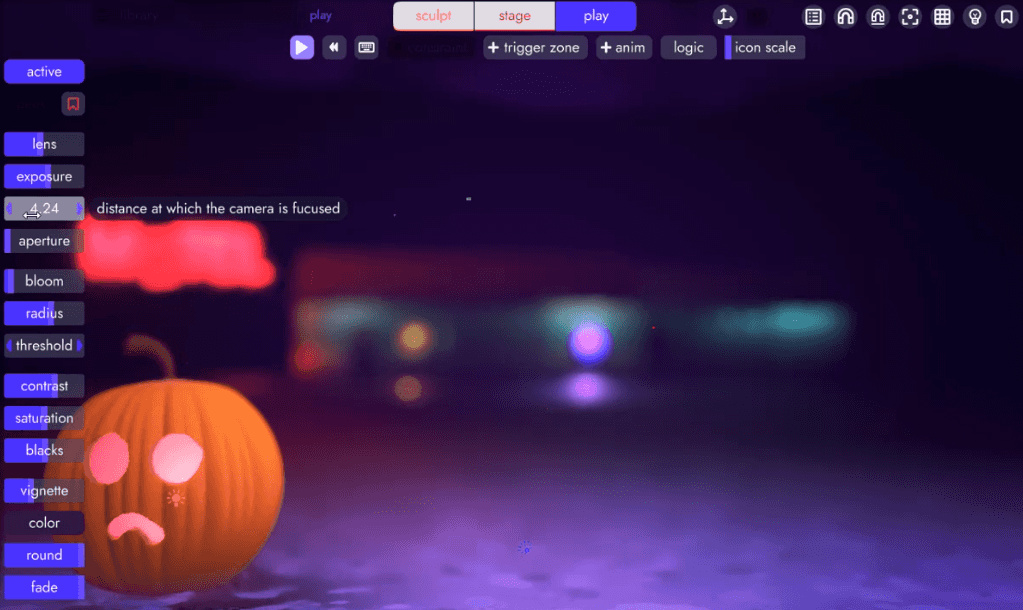
Environment
 From the Stage Tab, you can also make environment-level changes to you scene. These include things like changing the size and color of the skybox (the background behind your scene), ambient occlusion, and fog.
From the Stage Tab, you can also make environment-level changes to you scene. These include things like changing the size and color of the skybox (the background behind your scene), ambient occlusion, and fog.
Here's an example showing how changes to the skybox colors and fog levels can affect the look of your scene.
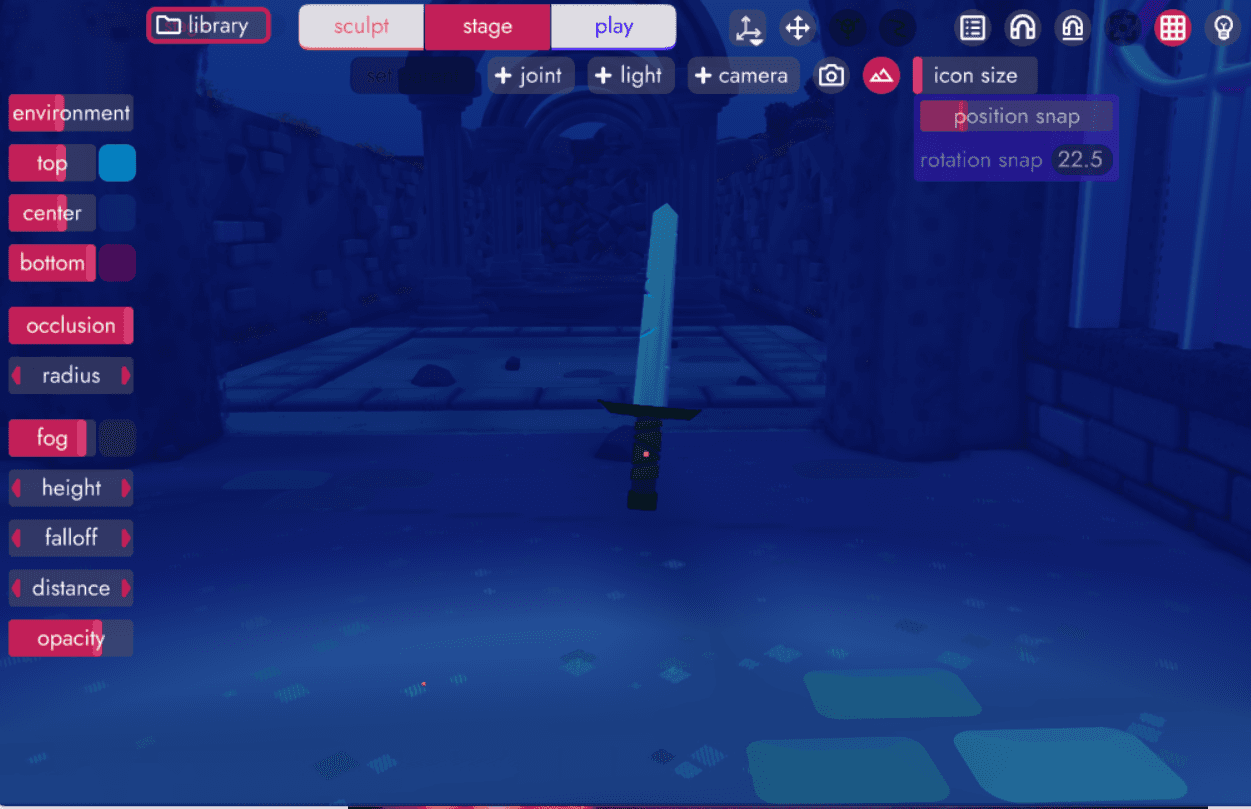
Lighting, camera effects, and environment settings come together to define the look and mood of your scenes.